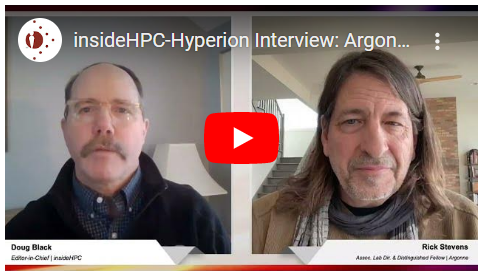In this interview conducted on behalf of HPC analyst firm Hyperion Research, we spoke with Argonne National Laboratory’s Rick Stevens about the present and future of HPC.
Stevens is associate laboratory director for computing, environment and life sciences and Argonne distinguished fellow. He is a long-time influential HPC strategist with major impact on U.S. leadership computing planning. The starting point for this conversation is a presentation Stevens gave at a Hyperion event in Washington related to implementation of the CHIPS and Science Act and includes his insights on the post-exascale build-out of an integrated network of U.S. supercomputing capacity (the Integrated Research Infrastructure, or IRI). We then look at AI for science and the use of data-driven modeling and simulation, which shows the potential to deliver major performance gains for researchers.
Other topics include the challenges of getting to zettascale-class computing and what HPC in 2040 could look like, including the role of 1 million-qubit quantum systems within supercomputing infrastructures.
Stevens also provides an upbeat update on the Aurora installation ongoing at the Argonne Leadership Computing Facility. Upon completion, the Intel system will deliver 2-plus exaFLOPS performance.




